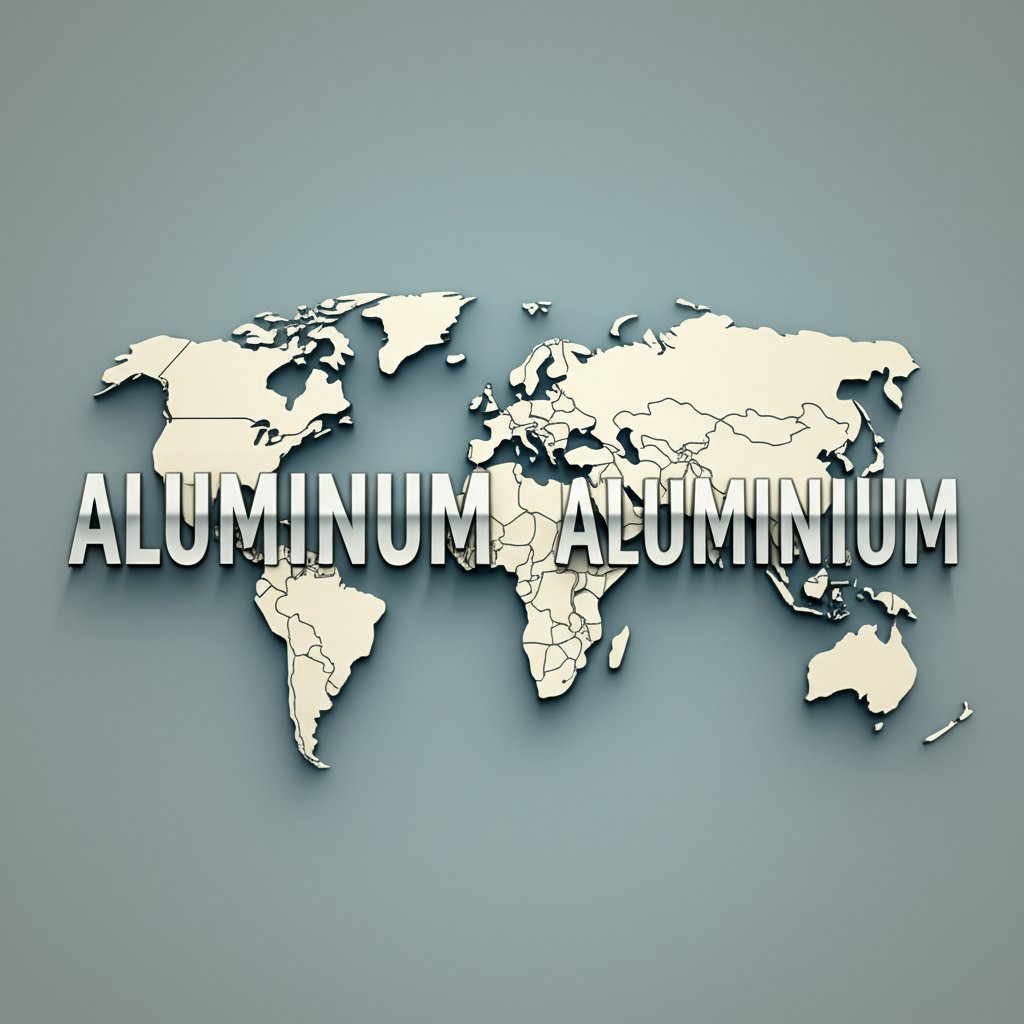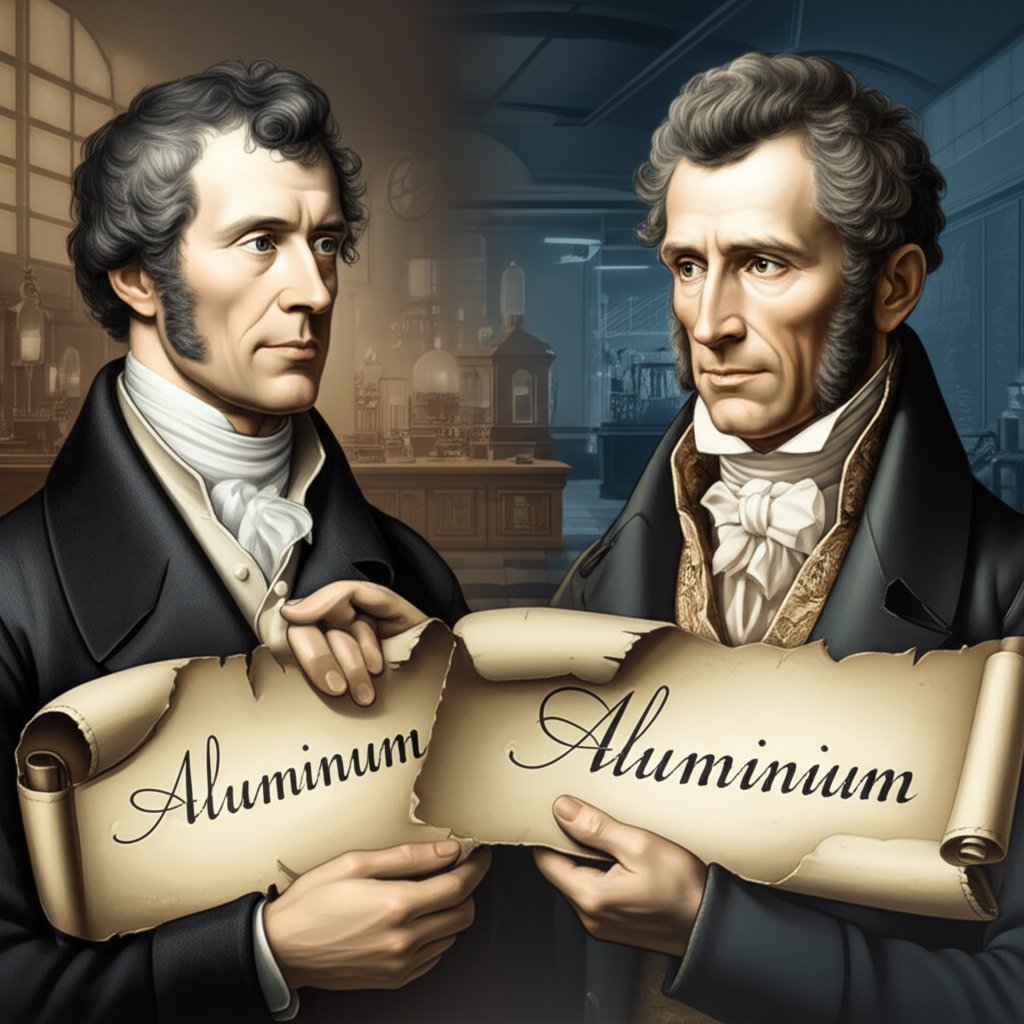
When you grab a roll of foil in your kitchen, do you call it aluminum or aluminium? Sounds complex? You’re not alone. The difference between aluminum and aluminium is one of the most well-known quirks in English spelling, and it often sparks curiosity:
Is one spelling more correct than the other, or is it simply a tale of two Englishes?
In reality, both aluminum and aluminium are correct—they just belong to different sides of the Atlantic. In American English, "aluminum" is the standard, while "aluminium" is favored in British English and most other English-speaking countries. This isn’t just about spelling, but about linguistic identity. The aluminum vs aluminium debate highlights how language evolves and adapts to regional norms, much like other familiar word pairs such as "color" vs "colour" or "center" vs "centre".
Why does this matter? Whether you’re a student, a professional, or a curious reader, understanding the difference between aluminum and aluminium can help you communicate more clearly with a global audience. Throughout this guide, we’ll explore the fascinating history behind these spellings, how to pronounce each version, where each is used worldwide, and what it means for scientific, technical, and everyday writing. So, is it aluminum or aluminum? By the end of this article, you’ll know exactly which term to use—and why the aluminum versus aluminium question is more interesting than you might expect.

When you look at the periodic table, you might wonder: why do British people say aluminium while Americans say aluminum? The answer takes us back to the early 1800s and a chemist named Sir Humphry Davy. Davy was the first to identify the existence of the metal in the mineral alum. In 1808, he coined the term "alumium" for this new element, drawing inspiration from the Latin word alumen, meaning bitter salt. But the name didn’t stick for long. By 1812, Davy had already changed his mind, opting for the term "aluminum" instead, as noted in his influential book, Elements of Chemical Philosophy (Merriam-Webster).
However, the story didn’t end there. Around the same time, other scientists and writers in Britain began using the term "aluminium." Their reasoning was simple: they wanted the name to match the pattern of other elements like sodium, potassium, and magnesium, all of which end in "-ium." This made "aluminium" sound more classical and scientific, aligning with the conventions of the day (Dictionary.com). The alum vs aluminium debate was already taking shape, and aluminium soon became the favored term in British scientific circles.
So, how did we end up with two spellings? The answer lies in the way English evolved on both sides of the Atlantic. In the United States, Noah Webster’s influential American Dictionary of the English Language (1828) adopted the "aluminum" spelling. Webster was known for streamlining English spelling, and "aluminum" fit his vision for a simpler, more phonetic American English. By the early 1900s, "aluminum" had become the standard in American industry, science, and everyday language.
Meanwhile, the British spelling of aluminum—"aluminium"—took hold in the UK and much of the English-speaking world. The International Union of Pure and Applied Chemistry (IUPAC) eventually recognized both spellings as correct, but the split remained. Today, the American spelling aluminium is rarely seen in the U.S., while "aluminium" is the norm in the UK, Australia, and many other countries. The difference between these two spellings is more than just a matter of preference; it’s a reflection of linguistic history and cultural identity.
In the end, the aluminum v aluminium debate isn’t about which is more "correct"—it’s about how language adapts and evolves. As you continue reading, you’ll discover how this spelling split also affects pronunciation and usage worldwide, making the story of this everyday metal even more fascinating and practical.
Ever wondered how to pronounce aluminum—or is it aluminium—correctly? You’re not alone. Whether you’re reading a technical manual, listening to a science podcast, or simply chatting with friends from different countries, the pronunciation of this metal can be a source of confusion and curiosity. Let’s break down the difference with clear examples and a handy table for quick reference.
First, it’s important to note that the pronunciation of aluminum or aluminium depends on the spelling you use—and that spelling is tied to your region. In American English, you’ll hear a-LU-mi-num (four syllables), while in British English and most of the world, it’s al-u-MIN-i-um (five syllables). The extra syllable in "aluminium" not only changes the way it sounds but also shifts the stress within the word.
| Spelling | Phonetic Spelling (IPA) | Syllable Stress | Common Pronunciation Guide |
|---|---|---|---|
| Aluminum | /əˈluː.mə.nəm/ (American English) | Second syllable (LU) | a-LU-mi-num |
| Aluminium | /ˌæl.jəˈmɪn.i.əm/ (British English, also accepted in US science) | Third syllable (MIN) | al-u-MIN-i-um |
Understanding these subtle differences in the pronunciation of aluminum and aluminium helps avoid confusion and ensures clear communication—especially in global conversations. Next, let’s see how these spelling and pronunciation patterns map out across the world.

When you travel, study, or do business internationally, you’ll notice that the spelling of this versatile metal isn’t just a quirk—it’s a reflection of regional history, scientific tradition, and even global collaboration. Is it "aluminum" or "aluminium"? The answer depends on where you are, who you’re speaking to, and sometimes even what you’re buying off the shelf.
Let’s break down global usage patterns so you’ll never be caught off guard:
If you pick up a soda can in the U.S., you’ll see aluminum—a spelling that dominates North American industry, education, and media. This is no accident. The preference for "aluminum" was cemented by American dictionaries and the American Chemical Society, and it remains the go-to term for american aluminum manufacturers and consumers (Shengxin Aluminium).
Head to the UK, Australia, or most of Europe, and you’ll find aluminium on everything from foil packaging to science textbooks. This spelling not only matches the british pronunciation of aluminum but also aligns with the naming conventions for other metals ending in "-ium," such as sodium and potassium. The International Union of Pure and Applied Chemistry (IUPAC) recognized "aluminium" as the official international standard in 1990, reinforcing its use in scientific literature and global trade. However, "aluminum" remains fully accepted in North American contexts, especially in technical, industrial, and educational documents.
Wondering how this debate plays out in other languages? In Spanish, the word is aluminio. If you’re searching for "aluminum in Spanish" or "aluminio en ingles," you’ll discover that "aluminio" is the direct translation and is universally recognized in Spanish-speaking countries (Collins Dictionary). This consistency simplifies communication in international trade and science, even as English speakers debate between "aluminum" and "aluminium."
Imagine shopping for kitchen foil, car parts, or building materials. In the U.S. and Canada, you’ll see "aluminum foil" and "aluminum window frames." In the UK and Australia, it’s "aluminium foil" and "aluminium profiles." Manufacturers—especially those serving global markets—must adapt their product labels, documentation, and even technical standards to match local spelling conventions. Companies such as Shengxin Aluminium customize their communications to ensure clarity and compliance wherever their products are sold, whether that means using "aluminum" for North America or "aluminium" for Europe and Asia.
For a deeper dive into the nuances of this spelling debate, including practical tips for choosing the right term in your writing or business communications, check out this related blog: Is It Aluminum or Aluminium? Clearing Up the Spelling Confusion.
Next, we’ll explore how the science behind this metal is unchanged, no matter which name you use—reminding us that, despite the spelling debate, the element itself remains universally essential.
When you peel back the layers of the aluminum or aluminium debate, you’ll find that—no matter which spelling you use—both refer to the exact same element on the periodic table. But what does that mean in practice? Let’s break down the scientific identity of this remarkable metal.
Chemically, aluminum and aluminium are identical. The difference is purely linguistic.
So, is Al a metal? Absolutely. Both scientists and industry professionals agree that aluminum is an element—and, more specifically, a lightweight, silvery-white metal. It’s not a metalloid, but a true metal, prized for its unique combination of properties:
These features explain why aluminum or aluminium is found everywhere—from soda cans and kitchen foil to aircraft frames and power lines (ChemistryTalk).
Curious about the origins of this metal? You’ll never find pure aluminum in nature—it’s far too reactive. Instead, it’s locked up in minerals, most notably bauxite ore. The journey from bauxite to usable metal involves two major industrial processes:
So, when someone asks, "where does the aluminum come from?"—the answer is bauxite, a reddish rock found in tropical and subtropical regions. Major producers include Australia, Guinea, and China, but the metal itself is now essential worldwide.
Whether you’re reading a British science journal that spells it "aluminium" or a North American engineering blueprint that uses "aluminum," you can be confident that both refer to the same essential element: Al, atomic number 13. As we move forward, keep in mind that while the spelling may shift, the science stays the same—making aluminum or aluminium a truly global material. Next, let’s see how professional writers and editors decide which spelling to use in formal documents and technical publications.
When you’re preparing a research paper, technical manual, or business report, the question isn’t just "aluminum or aluminium"—it’s about which spelling your audience expects. Imagine submitting a scientific article to a British journal using the American spelling, or vice versa. Consistency and adherence to style guides are crucial for professionalism and clarity. So, how do you know how to spell aluminium—or aluminum—correctly for your context?
| Style Guide | Recommended Spelling | Region/Audience |
|---|---|---|
| AP Stylebook | Aluminum | American English |
| Chicago Manual of Style | Aluminum (if following American spelling) | American English |
| APA Publication Manual | Aluminum (except in quoted British sources) | American English, academia |
| Oxford English Dictionary | Aluminium | British English |
| Cambridge Guide to English Usage | Aluminium | British/Commonwealth English |
As you can see, the aluminum British spelling is "aluminium," while American publications almost always use "aluminum." The difference isn’t just academic—it’s a reflection of your intended readership and the standards of your field.
Remember, the way you spell aluminium or aluminum signals your attention to detail and your respect for your audience’s linguistic norms. Mastering these subtle differences is an essential skill for any professional or academic writer.
Up next, we’ll see how these spelling choices play out in the world of engineering, manufacturing, and international trade—where precision and clarity matter even more.

When you’re designing an airplane wing, specifying materials for a skyscraper, or sourcing parts for an international supply chain, you might wonder: does it really matter if you write aluminum or aluminium in your technical documents? The answer is a resounding yes—especially when precision, safety, and global collaboration are on the line.
Imagine you’re reviewing an engineering blueprint for a new bridge. If the document is produced in North America, you’ll almost always see “aluminum” listed in the specifications. This is more than just tradition—it reflects a century of industrial standards, engineering codes, and product labeling. In fact, organizations like the Aluminum Association in the U.S. have established “aluminum” as the default term for everything from aluminum nameplates to aluminum disc components. If you’re in Europe, Australia, or much of Asia, the same blueprint will say “aluminium,” following international and regional norms.
This distinction goes beyond spelling. It can affect:
Confusing “metal” with “aluminium” or “tin vs aluminium” can lead to costly mistakes. For example, an aluminum disc used in electronics has vastly different properties from a tin component—mixing them up could result in product failure or safety issues. That’s why standardized terminology is essential in technical communication.
So, how can you avoid mix-ups and ensure everyone’s on the same page? Here’s a step-by-step approach for engineers, project managers, and procurement teams:
As you move forward with international projects or cross-border collaborations, remember that getting the spelling right is a simple but powerful way to ensure clarity and professionalism—no matter which side of the aluminum or aluminium divide you’re on. Next, we’ll wrap up with a practical decision framework for choosing the right term for your audience and project.
After exploring the history, science, and global usage of aluminum or aluminium, you might still be wondering: how do you decide which term to use in your next project or publication? Imagine you’re drafting a technical document, labeling a product, or even just writing an email to an international client—choosing the right spelling matters for clarity and professionalism. Sounds complex? Let’s break it down with a simple, actionable checklist so you can always make the right call.
Here’s some interesting info about aluminum: no matter how you say aluminum or spell it, you’re referring to the same versatile, lightweight, and endlessly recyclable metal. The fun facts about the element aluminum—like its role in food preservation, transportation, and technology—remain unchanged across borders. The real key is using the right term for your audience and context, ensuring your message is clear and your professionalism shines through.
Ultimately, while the aluminum versus aluminium debate is fascinating, the quality and reliability of your material matter most. For projects demanding precision-engineered profiles, partnering with an experienced manufacturer is essential. Companies like Shengxin Aluminium deliver products that meet stringent global standards—whether you specify aluminum or aluminium in your documentation. Their expertise ensures you receive the exact material specifications required, helping you avoid costly errors and delays.
In summary, whether you call it aluminum or aluminium, you’re working with a metal that’s vital to modern life and industry. The right term depends on your audience—but the right supplier, like Shengxin Aluminium, ensures you get the performance you need, every time.
The element was first named 'alumium' by Sir Humphry Davy in 1808. He later changed it to 'aluminum,' but British scientists soon adopted 'aluminium' to align with other element names ending in '-ium.' Both spellings have historical roots, but 'aluminum' appeared first in Davy’s published works.
British English prefers 'aluminium' to match the naming convention of elements like sodium and potassium. This spelling became standard in the UK and most Commonwealth countries, while American English kept the shorter 'aluminum.'
No chemical difference exists—both refer to the same element with the symbol 'Al' and atomic number 13. The difference is purely in spelling and pronunciation, reflecting regional language preferences.
Use 'aluminum' for US and Canadian audiences and 'aluminium' for the UK, Australia, and most international contexts. Always check your organization’s style guide for specific requirements, especially in technical or academic documents.
Aluminum (or aluminium) is lightweight, corrosion-resistant, and highly recyclable. It’s used in everything from kitchen foil to airplanes. Leading manufacturers like Shengxin Aluminum supply precision-engineered profiles for global industries, ensuring high quality no matter which spelling you use.
 online service
online service 0086 136 3563 2360
0086 136 3563 2360 sales@sxalu.com
sales@sxalu.com +86 136 3563 2360
+86 136 3563 2360